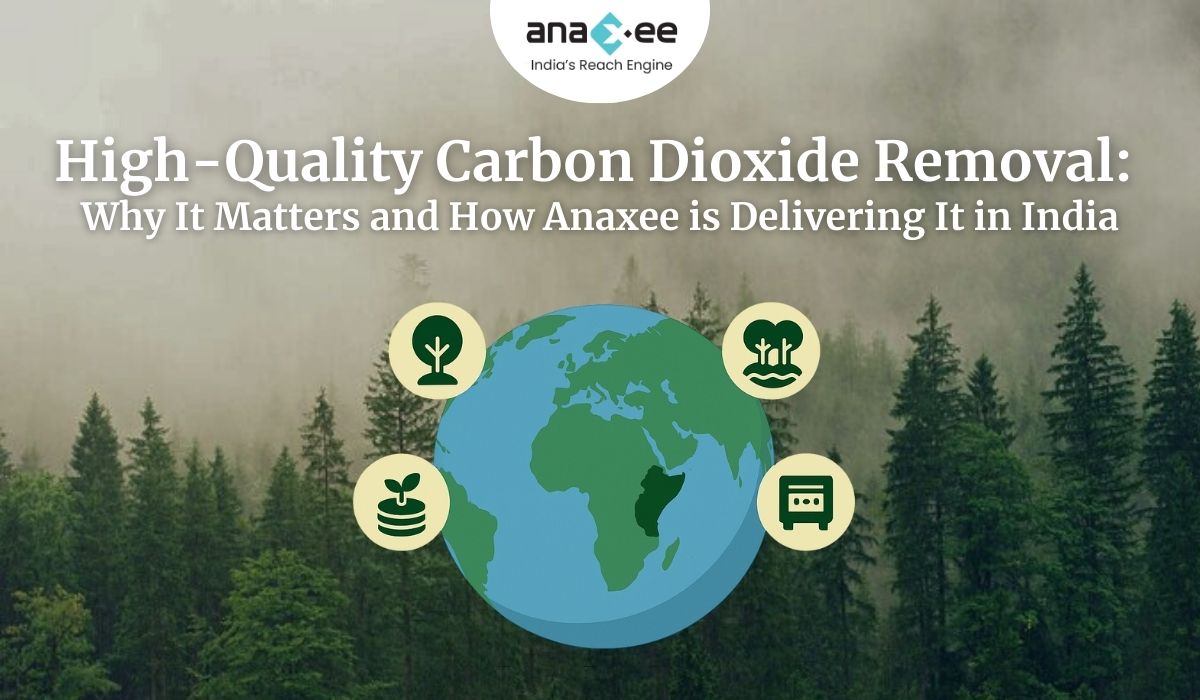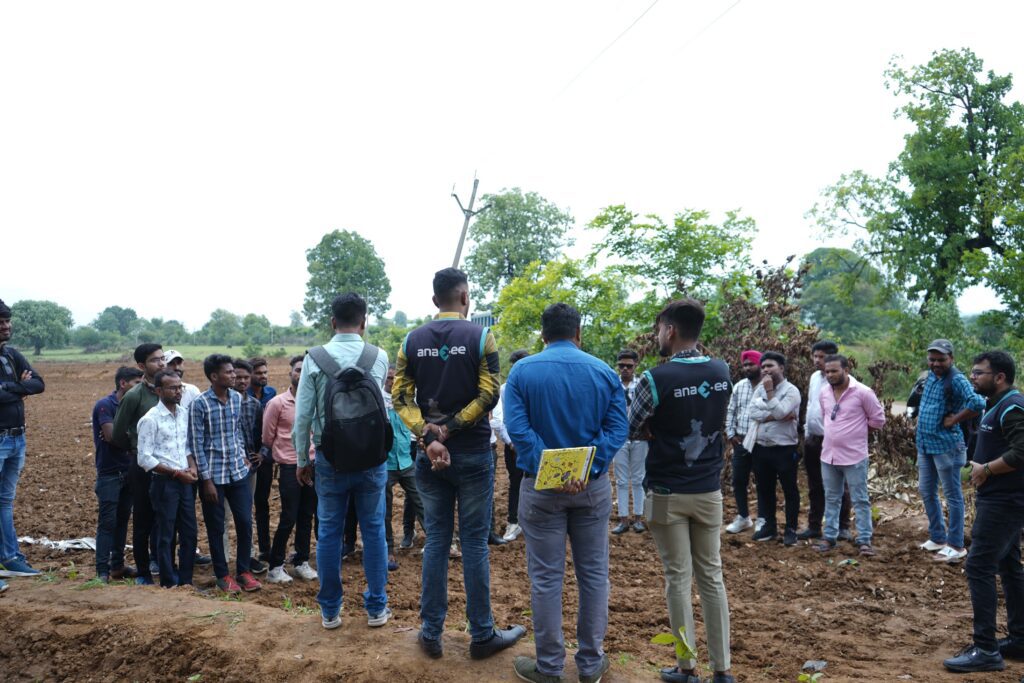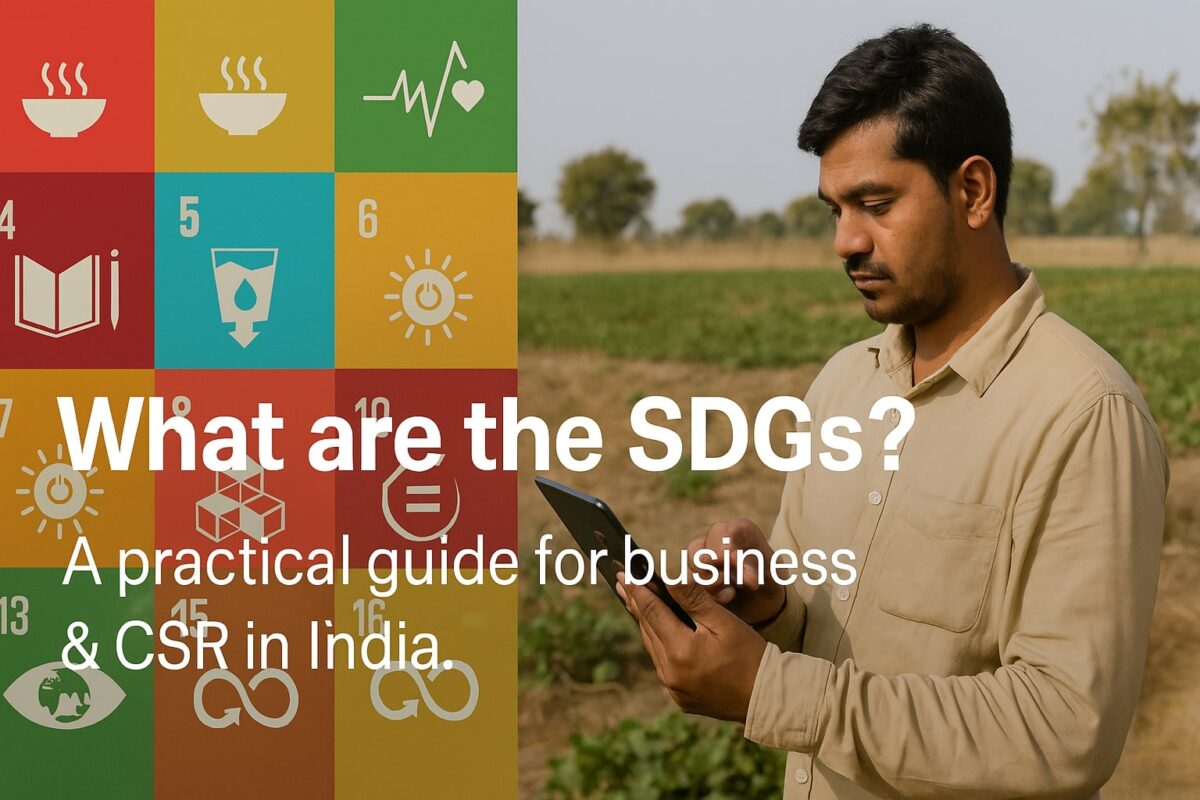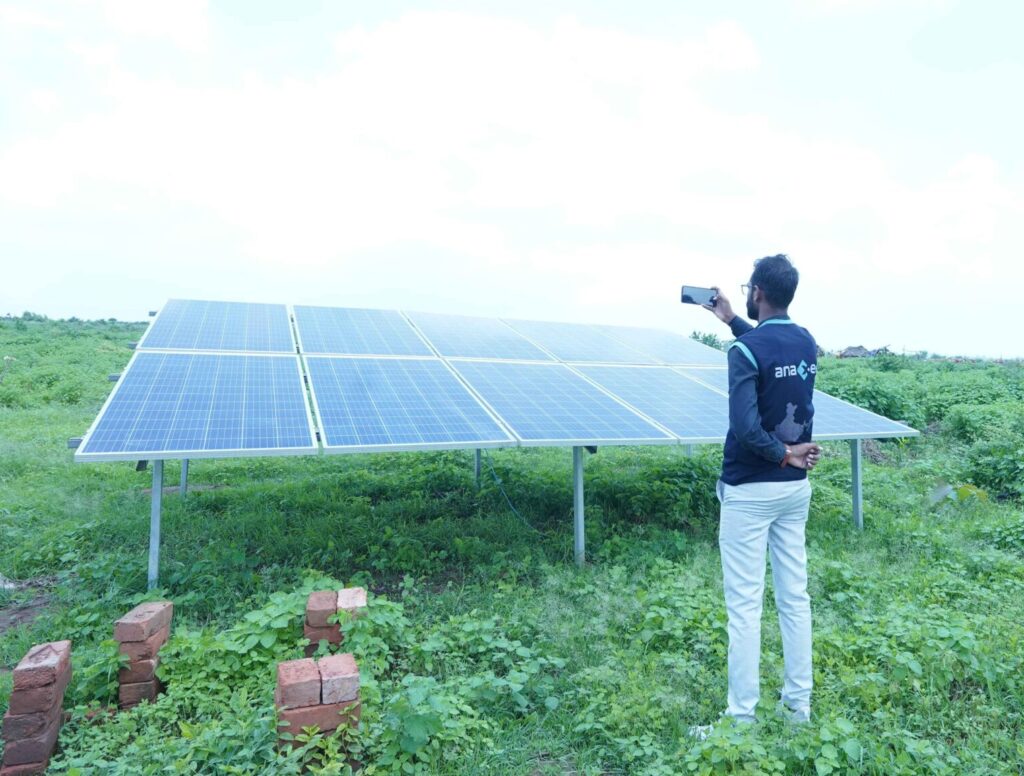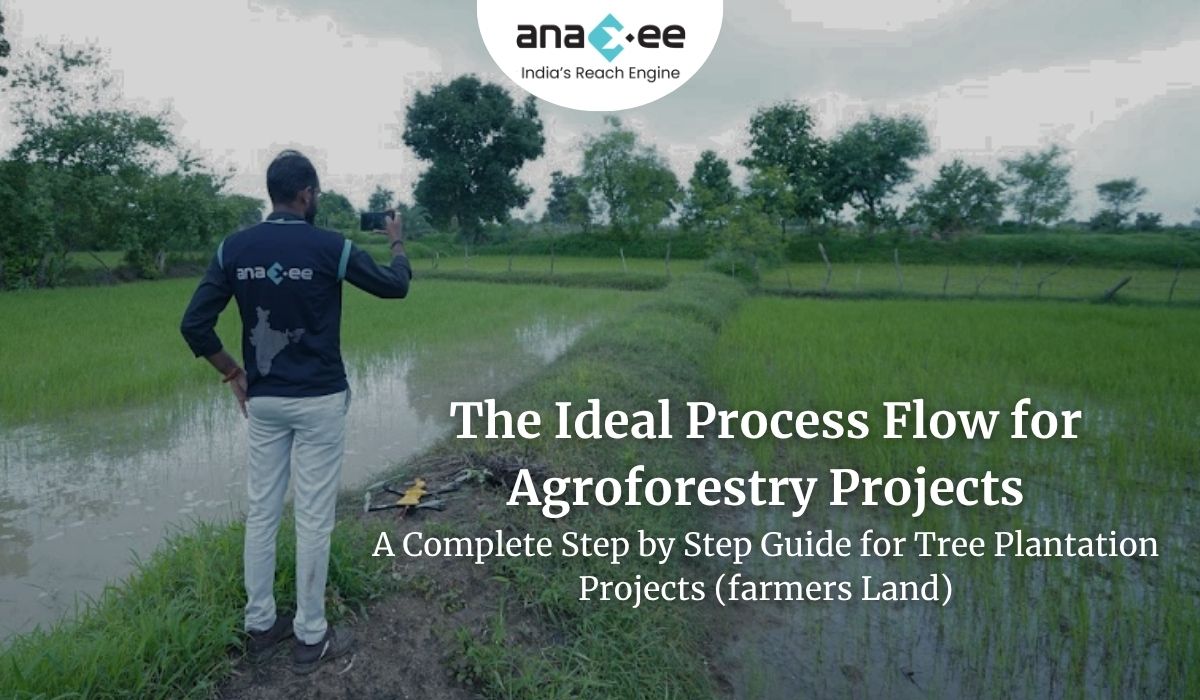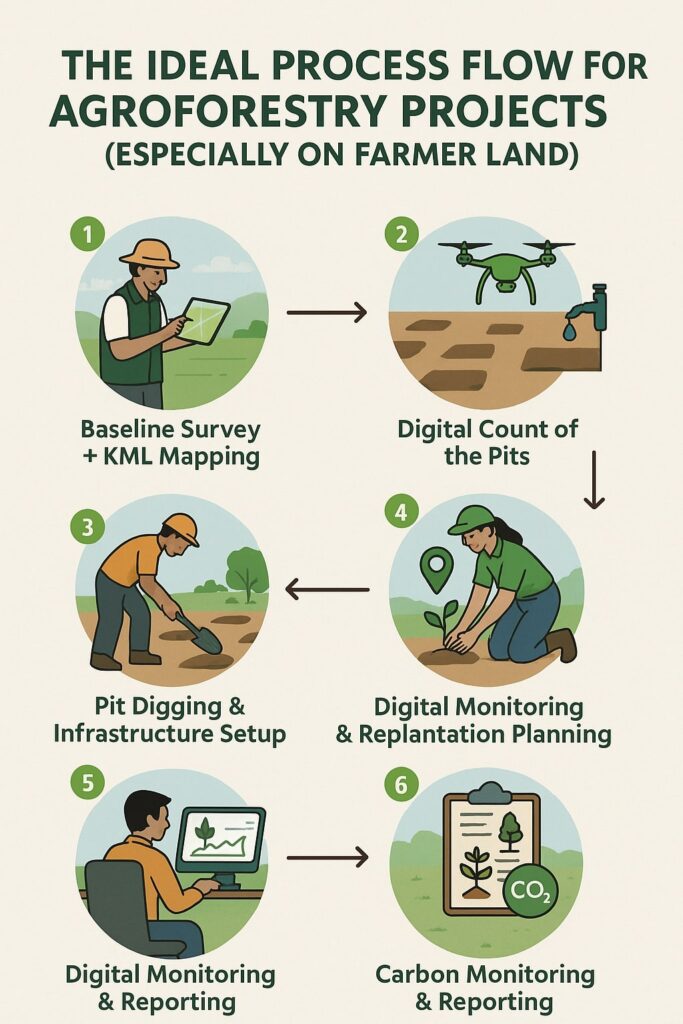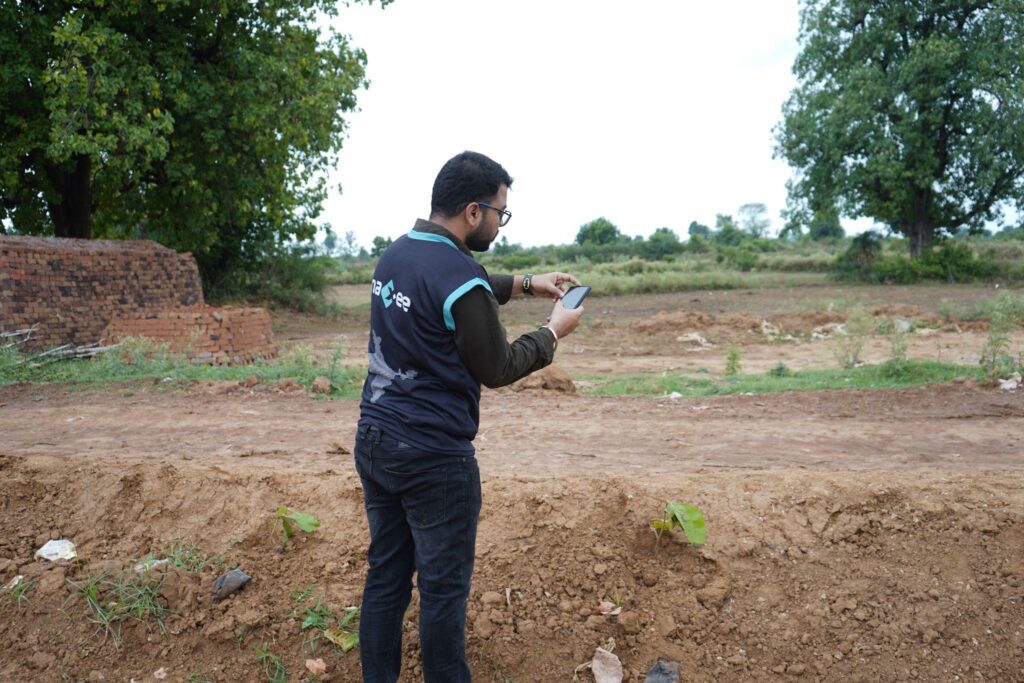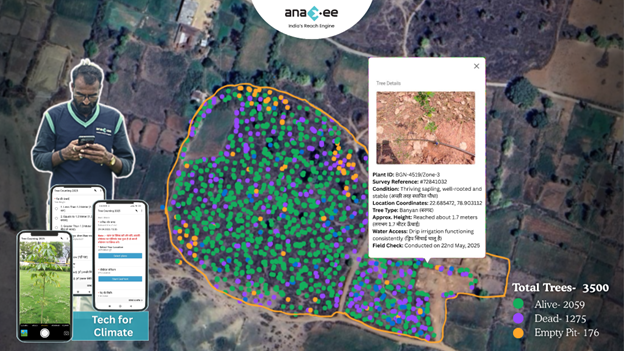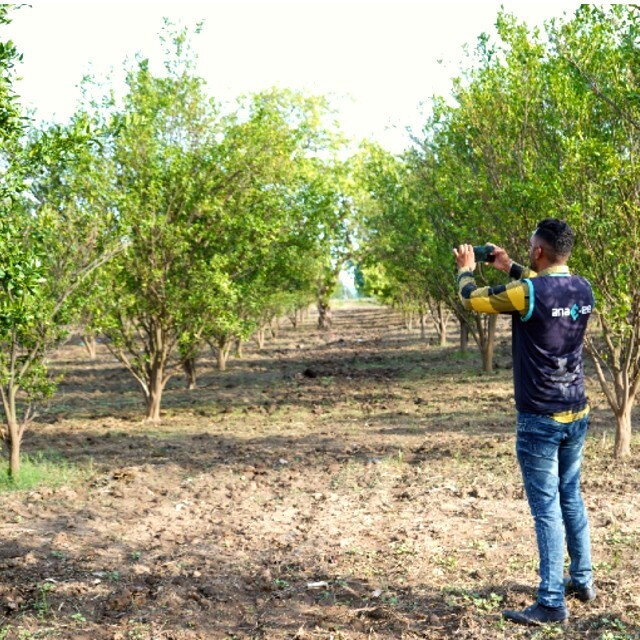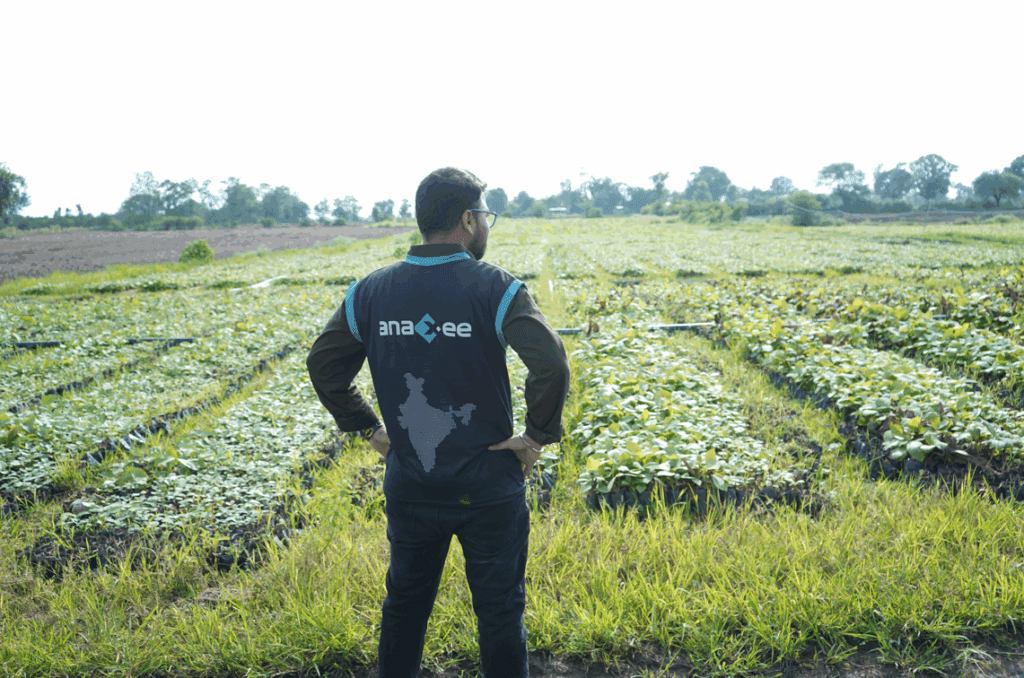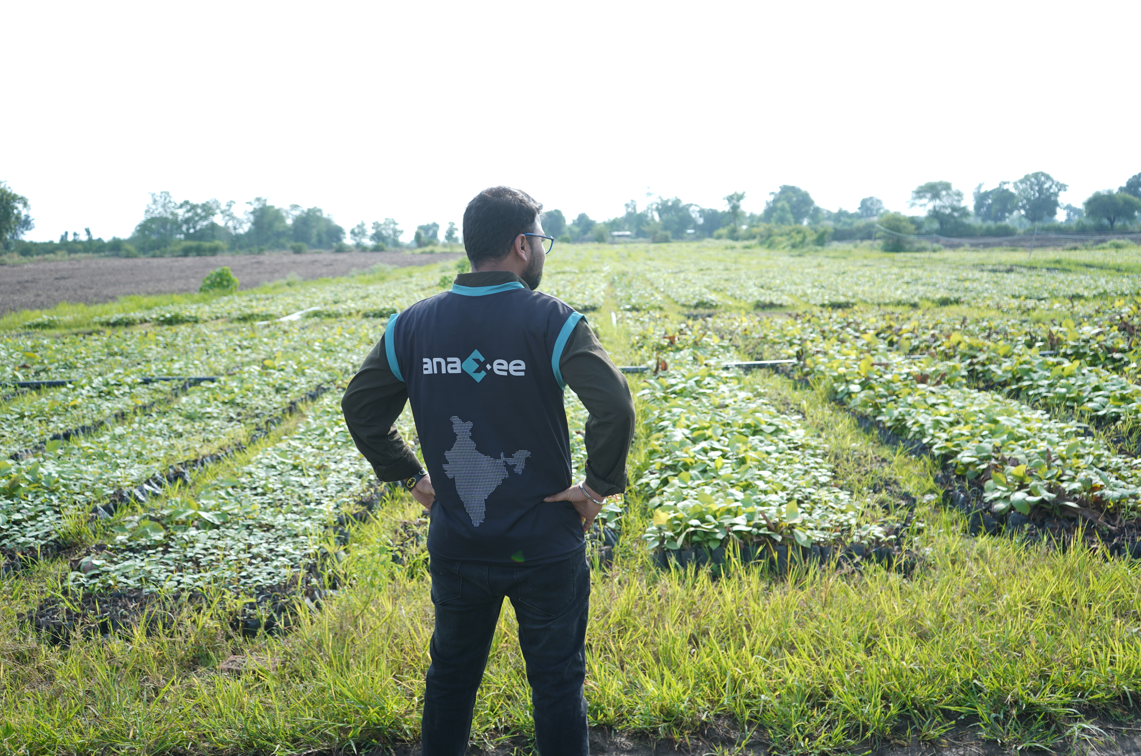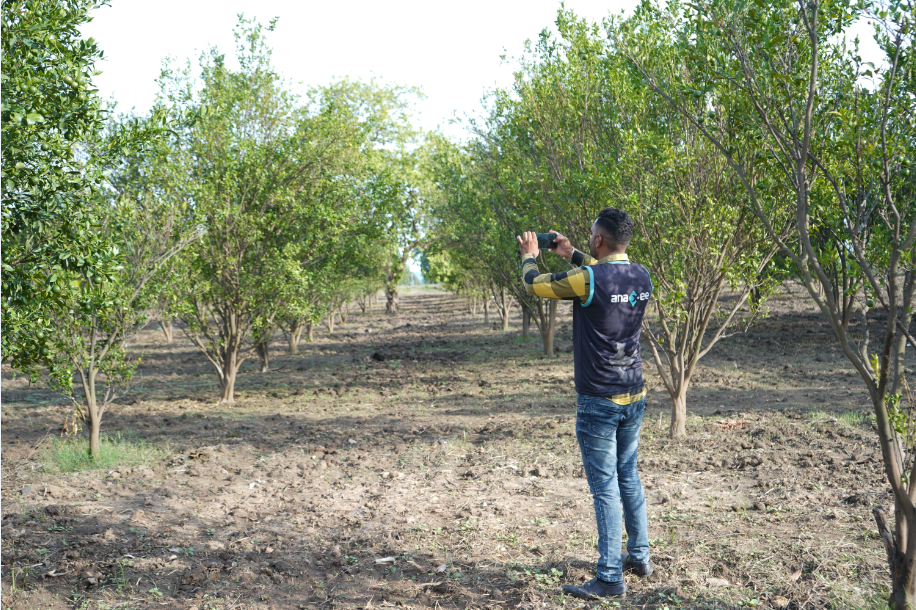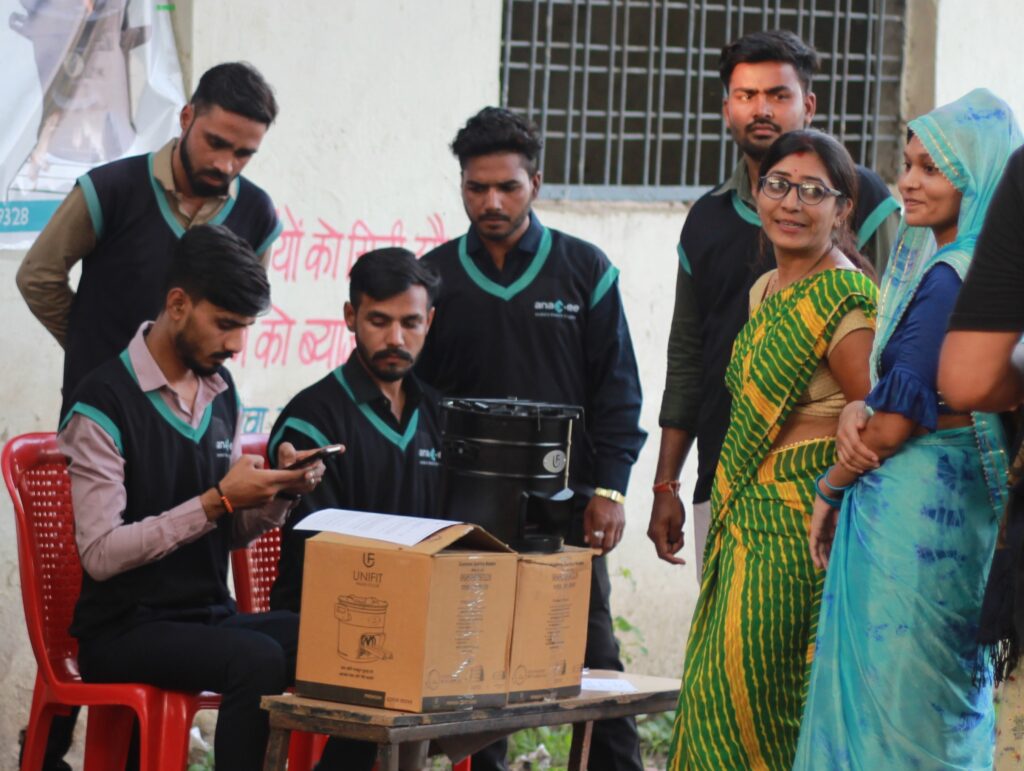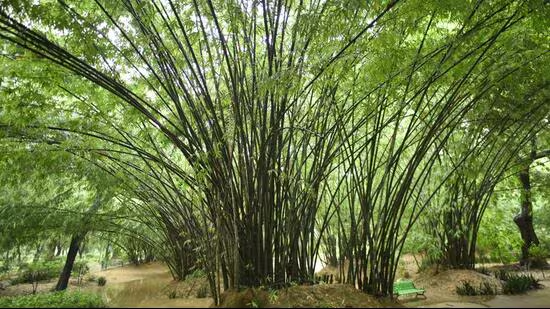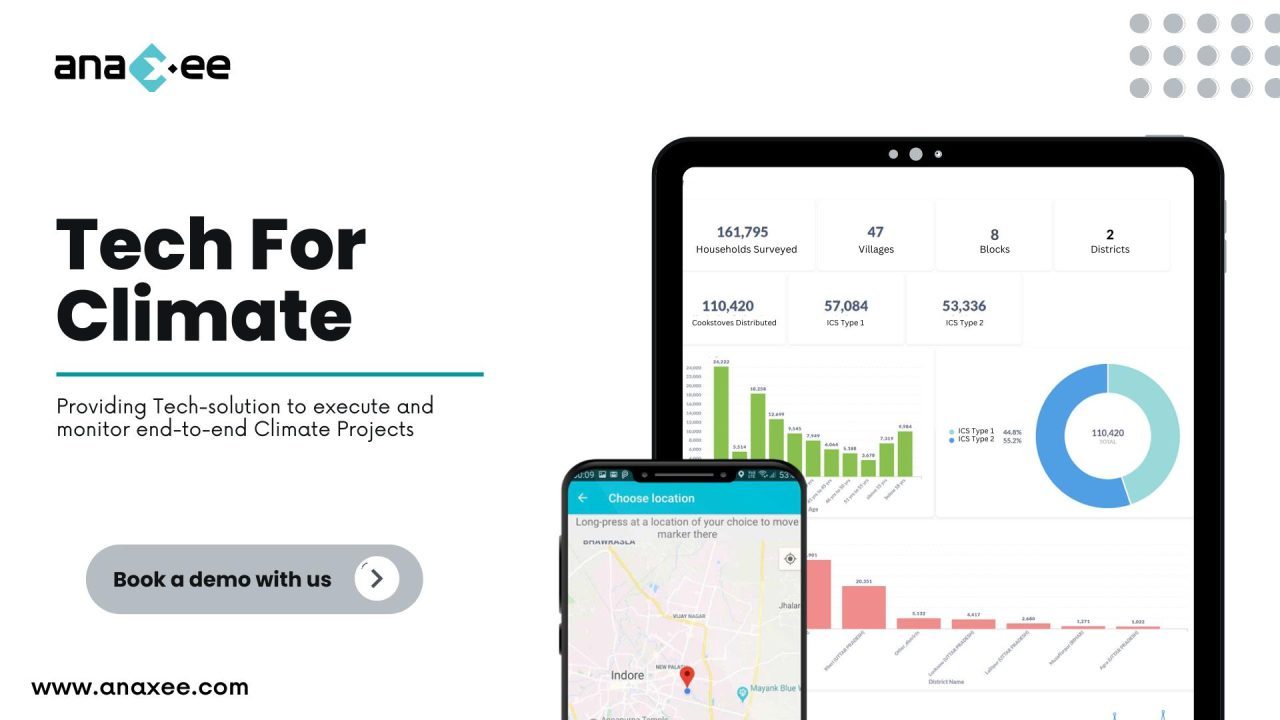What are the Sustainable Development Goals?
(A practical guide for companies, investors, and CSR/ESG teams in India)
The Sustainable Development Goals (SDGs) are 17 globally agreed targets adopted by all UN Member States in 2015 to be achieved by 2030. They cover poverty, health, education, gender equality, water, energy, jobs, industry, cities, climate, biodiversity, and governance. Progress is real but off-track overall; the 2025 UN status report shows persistent gaps and a multi-trillion-dollar annual financing shortfall. India measures SDGs state-by-state using the SDG India Index; the 2023–24 edition reports a national score of 71 with notable gains on poverty reduction, jobs, climate action, and life on land. For companies, SDG-aligned projects translate into risk reduction, access to finance, compliance readiness, and measurable impact—provided there’s credible dMRV and last-mile execution.
1) The basics—what the SDGs are (and what they’re not)
Definition. The Sustainable Development Goals (SDGs) are 17 global goals and 169 targets adopted under the 2030 Agenda for Sustainable Development in 2015. Every UN Member State signed on, making the SDGs the most widely accepted development framework in history.
Purpose. The SDGs are a blueprint to end extreme poverty, reduce inequality, and protect the planet while sustaining economic growth and good governance. This is not a charity wishlist; it is a policy-and-metrics framework that helps governments and markets pull in the same direction.
Measurement. The SDGs are tracked through a global indicator framework that’s periodically updated. As of 10 April 2025, the UN system classifies 161 indicators as Tier I (methodology and data widely available) and 60 as Tier II (methodology clear, data not universal), among others—meaning the technical underpinnings are mature for most key metrics.
What SDGs are not. They’re not a single certification logo, not a replacement for local laws, and not a one-size KPI set for every organization. They’re a public good: a global scoreboard governments, companies, financiers, and civil society can align to.
2) The 17 Goals—one-line summaries for decision makers
No Poverty (SDG 1): End poverty everywhere.
Zero Hunger (SDG 2): Food security, better nutrition, and resilient agriculture.
Good Health & Well-being (SDG 3): Universal health coverage, maternal/child health.
Quality Education (SDG 4): Inclusive, equitable learning for all.
Gender Equality (SDG 5): End discrimination/violence; ensure participation and rights.
Clean Water & Sanitation (SDG 6): Safe water, sanitation, hygiene, and watershed management.
Affordable & Clean Energy (SDG 7): Universal access to modern, renewable energy.
Decent Work & Economic Growth (SDG 8): Jobs, SME growth, productivity, safety.
Industry, Innovation & Infrastructure (SDG 9): Sustainable industrialization, R&D, resilient infrastructure.
Reduced Inequalities (SDG 10): Inclusion across income, age, gender, migration.
Sustainable Cities & Communities (SDG 11): Housing, mobility, pollution, resilience.
Responsible Consumption & Production (SDG 12): Resource efficiency, waste prevention.
Climate Action (SDG 13): Mitigation, adaptation, finance, capacity-building.
Life Below Water (SDG 14): Oceans, fisheries, pollution control.
Life on Land (SDG 15): Forests, land degradation, biodiversity.
Peace, Justice & Strong Institutions (SDG 16): Rule of law, transparency, anti-corruption.
Partnerships for the Goals (SDG 17): Finance, technology, trade, data, and collaboration.
Board takeaway: Think of the 17 goals as a risk map + opportunity pipeline. Each goal touches a material ESG category with clear policy momentum and—importantly—tracking indicators you can report against.
3) Where the world stands in 2025—progress, but not enough
Status check. The UN SDG Report 2025 flags two truths: (1) millions of lives have improved since 2015 (e.g., access to electricity, mobile broadband, some health outcomes), (2) but the world remains off-track on most targets—especially on climate, biodiversity, food security, and financing. Macroeconomic headwinds and debt overhangs in developing countries are slowing progress.
The money gap. The annual SDG financing gap for developing countries is now estimated at ~$4 trillion—a jump from pre-pandemic levels. This is why blended finance, MDB reform, tax cooperation, and private capital mobilization dominate the policy conversation.
Political reality. International negotiations in 2025 continue to wrestle with development finance and governance. Outcomes matter because they influence concessional funding, debt terms, and the policy environment for corporate projects.
So what? Expect rising disclosure demands (on impact, nature, and value chain), more results-based finance, and a premium on credible data. Organizations that can prove delivery at the last mile will get funded faster.
4) India’s SDG picture—signals that matter for business
India tracks progress through the SDG India Index, published by NITI Aayog. The 2023–24 edition reports a national composite score of 71, up from 66 (2020–21) and 57 (2018 baseline). Gains are strongest on SDG 1 (No Poverty), SDG 8 (Decent Work), SDG 13 (Climate Action), and SDG 15 (Life on Land). State/UT scores range 57–79. Translation: policy and program alignment is rising, and procurement/CSR windows are opening around climate and livelihoods.
Implication for corporates/CSR: There’s a policy-backed, measurable pathway to fund and implement nature-based, livelihood, and health/education interventions—if you can deliver verifiable outputs and outcomes.
5) How the SDGs are measured—targets, indicators, tiers (and why this matters to your CFO)
Each SDG has targets and indicators. Indicators are grouped by Tier:
Tier I: Methodology and data widely available (low reporting friction).
Tier II: Methodology clear; data not regularly produced by many countries (medium friction).
Multiple Tiers / Pending review: Complex metrics or components under evaluation.
As of April 10, 2025, the UN lists 161 Tier I and 60 Tier II indicators (plus a small set with mixed tiers/pending review). For companies, this means more mature KPIs to align with—reducing the risk of “impact-washing” and making CFO-grade reporting feasible.
6) Why companies should care—hard benefits, not soft PR
Capital access: Development banks, impact funds, and sustainability-linked instruments increasingly tie terms to SDG-relevant outcomes—energy access, climate resilience, biodiversity, livelihoods. Strong projects can lower cost of capital.
Compliance readiness: SDG-aligned reporting dovetails with evolving disclosure regimes and supply-chain expectations (scope emissions, nature, human rights).
Market expansion: SDG-aligned products tap new demand (clean energy devices, water filters, climate-smart ag inputs) and unlock public co-funding.
Talent & brand: Evidence-backed impact attracts talent and partners—increasingly a procurement prerequisite, not a nice-to-have.
Caveat: None of this works without proof—geo-tagged data, independent QA, permanent traceability, and on-ground feedback loops.
7) From SDGs to execution—what credible projects look like
A credible SDG-aligned project should demonstrate:
Clear problem → measurable outcome (e.g., “X households receive clean cooking devices; Y% reduction in PM2.5 exposure; Z tCO₂e avoided”).
Target–indicator mapping to at least one SDG (primary) and secondary co-benefits.
dMRV (digital Measurement, Reporting, Verification) with geo-evidence, time stamps, and beneficiary consent.
Last-mile operations with trained local teams; not just one-time deployments.
Independent QA and audit trails.
Data governance and grievance mechanisms (relevant to SDG 16).
Transition plan—maintenance, repairs, engagement beyond Day 0.
These aren’t buzzwords; they’re how you survive scrutiny from auditors, financiers, and the public.
8) Mapping common project types to SDGs (examples Anaxee can execute)
-Agroforestry on smallholder lands → SDG 13 & 15 (climate and biodiversity), SDG 1 & 8 (farmer incomes, jobs). Requires baseline/census, survivability audits, and seasonally tuned field ops.
-Clean energy devices (solar lanterns, SHS) → SDG 7, co-benefits for SDG 3 (health), SDG 4 (study hours), SDG 13. Needs device registry and after-sales service logs.
-Clean cooking → SDG 3 & 7, SDG 5 (gender/time savings), SDG 13. Track usage data, fuel displacement, health proxies.
-Water filters / water ATMs → SDG 6, SDG 3. Requires water-quality logs, uptime monitoring, replacement cycles.
-Beneficiary identification & targeting → Cross-cutting; essential for SDG 1, 2, 3, 4, 5 and 16 (inclusion, accountability).
-Digitization of climate data (dMRV) → Enabler for SDG 13, 15 and reporting across the board.
(All SDG goal definitions and linkages per UN goal descriptions.)
9) The financing conversation you can’t avoid
Reality check: The $4T+/year SDG financing gap won’t close with philanthropy alone; private capital is now central. Expect performance-based contracts, blended structures, and stronger due diligence around data quality and permanence of outcomes. Projects that prove additionality, durability, and social safeguards will move first.
What to prepare:
-3–5 year impact pro-forma with conservative baselines.
-Indicator mapping (UN indicator codes where relevant) to shorten diligence.
-Ops manual: SOPs for enrollment, training, maintenance, and exit.
-Risk register (seasonality, supply chain, beneficiary attrition) with mitigation plans.
-Independent QA plan and data sharing terms.
10) India strategy—align with the SDG India Index
Since the SDG India Index scores states/UTs, align proposals with state priorities that are already trending up (e.g., climate action, poverty reduction, life on land). This improves buy-in, co-funding odds, and speed. Use the index to justify geographic focus and set realistic targets without overpromising.
11) How Anaxee de-risks SDG-aligned projects (execution, not jargon)
Why this matters: Many projects fail not on ideas, but on weak ground execution—missing baselines, poor training, data holes, and zero follow-up.
What we do differently:
-Last-mile workforce at scale: trained local digital runners with live feedback loops from a central 125+ member team coordinating checks, corrections, and escalation.
-Census-based enrollment (not estimates), polygon mapping, and tree/device registries with unique IDs, geo-tags, and time stamps.
-dMRV stack: mobile apps, QC dashboards, audit logs, and photo/video protocols tied to SDG indicator logic where relevant.
-QA & re-verification: randomized back-checks, survivability audits, and grievance channels.
-Partner-ready data: datasets structured for financiers and auditors.
Bottom line: If you need SDG-aligned results you can defend, you need verifiable data and trained teams that don’t disappear after deployment.
12) Frequently asked questions (straight answers)
Q1. Is “doing SDGs” just CSR?
No. The SDGs are a global policy and measurement framework. CSR is one vehicle to fund SDG-aligned work. Many SDG projects are commercial or blended finance.
Q2. Which SDGs should my company prioritize?
Start with materiality: your supply chain risks and core strengths. Then choose a primary SDG and 1–2 co-benefits where you can actually measure outcomes.
Q3. How do we report?
Map activities to UN indicators where possible, set baselines, and use verifiable dMRV. Avoid vanity metrics.
Q4. What’s new in 2024–2025?
Updated indicator tiers, a clear financing gap number that’s driving MDB reform debate, and ongoing policy focus on results-based funding. Translation: strong data beats glossy decks.
13) A simple, SDG-aligned corporate action plan (90 days)
Weeks 1–2: Prioritize & baseline
-Pick 1–2 SDGs aligned to your business.
-Define indicators and data you can feasibly collect.
-Commission a rapid baseline (geo-tagged).
Weeks 3–6: Pilot design
-Choose 2–3 districts and a single intervention (e.g., agroforestry bundles or water filters).
-Lock SOPs for training, deployment, and QA.
-Pre-wire reporting templates to match UN indicator logic (where applicable).
Weeks 7–12: Launch & verify
-Train local teams; push live checklists.
-Capture data in dMRV; run back-checks.
-Publish a concise results note with photos, geo-evidence, and beneficiary feedback.
Day 90: Decide to scale or refine; line up co-funding or performance-based contracts.
14) Common mistakes to avoid
-Counting activities instead of outcomes. Handing out devices isn’t impact; sustained usage is.
-Ignoring seasonality. Agroforestry done off-season = survivability risk.
-No maintenance budget. Water filters and clean cookstoves fail without service cycles.
-Data holes. If it’s not geo-tagged/time-stamped with QA, expect pushback.
-Over-claiming co-benefits. Tie claims to specific indicators or keep them conservative.
15) The road to 2030—pragmatic optimism
We’re past the halfway mark. The world is off-track at the macro level, but credible, verifiable projects can still move the needle—especially in climate-nature-livelihood intersections where India has scaled programs and state-level prioritization. The organizations that combine operational depth with clean data will shape outcomes—and capture the upside.
If you want SDG results you can publish without hedging, partner with teams that can execute and verify on the ground.
About Anaxee:
Anaxee drives large-scale, country-wide Climate and Carbon Credit projects across India. We specialize in Nature-Based Solutions (NbS) and community-driven initiatives, providing the technology and on-ground network needed to execute, monitor, and ensure transparency in projects like agroforestry, regenerative agriculture, improved cookstoves, solar devices, water filters and more. Our systems are designed to maintain integrity and verifiable impact in carbon methodologies.
Beyond climate, Anaxee is India’s Reach Engine- building the nation’s largest last-mile outreach network of 100,000 Digital Runners (shared, tech-enabled field force). We help corporates, agri-focused companies, and social organizations scale to rural and semi-urban India by executing projects in 26 states, 540+ districts, and 11,000+ pin codes, ensuring both scale and 100% transparency in last-mile operations.
